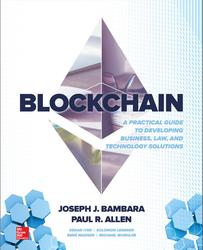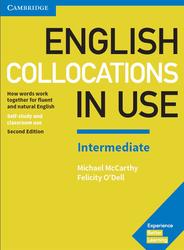The book covers blockchain definition, use cases, distributed technology, and especially blockchain development, with a good deal of code snippets and best practices. It targets the Ethereum blockchain, introducing Solidity and other aspects of the Ethereum framework. Additionally, there are two chapters devoted to setup, coding, validation, and deployment of a complete and comprehensive blockchain betting application.

Comparing Blockchains.
The distinction between public, consortium, and private blockchains is important. Even for “old school” distributed ledger adopters who prefer a traditional centralized system, they still get the addition of cryptographic auditability attached. As compared to public blockchains, private blockchains have a number of advantages. The private blockchain operator can change the rules of a blockchain. If it is a blockchain among financial partners, then where errors are discovered they will be able to change transactions. Likewise, they will be able to modify balances and generally undo anything. That said, there is a trail. In some cases, this functionality is necessary, as with property registry if a mistaken transaction is issued or some nefarious type has gained access and made themselves the new owner. This is also true on a public blockchain if the government has backdoor access keys like they did in the Clinton era. On the private blockchain, transactions are less expensive, since they only need to be verified by a few nodes that can be trusted to have very high processing power. Public blockchains tend to have more expensive transaction fees, but this will change as scaling technologies emerge and bring public-blockchain costs down to create an efficient blockchain system.
Nodes can be trusted to be very well connected, and faults can quickly be fixed by manual intervention, allowing the use of consensus algorithms that offer finality after much shorter block times. Improvements in public blockchain technology, such as Ethereum’s proof-of-stake, can bring public blockchains much closer to the “instant confirmation” ideal, but private blockchains will always be faster, and the latency difference will never disappear as unfortunately the speed of light does not increase by 2x every two years like Moore’s law. If read permissions are restricted, private blockchains can provide a greater level of privacy.
Contents.
CHAPTER 1 Introduction to Blockchain.
CHAPTER 2 Business Use Cases.
CHAPTER 3 Technology Use Cases.
CHAPTER 4 Legal and Governance Use Cases.
CHAPTER 5 Technology on Ethereum.
CHAPTER 6 Fast-Track Application Tutorial.
CHAPTER 7 Ethereum Application Best Practices.
CHAPTER 8 Private Blockchain Platforms and Use Cases.
CHAPTER 9 Challenges.
CHAPTER 10 Sample Application: Blockchain and Betting.
CHAPTER 11 Deploying the Sample Application: Blockchain and Betting.
Index.
Бесплатно скачать электронную книгу в удобном формате, смотреть и читать:
Скачать книгу Blockchain, A Practical Guide to Developing Business, Law, and Technology Solutions, Bambara J.J., Allen P.R., 2018 - fileskachat.com, быстрое и бесплатное скачивание.
Скачать pdf
Ниже можно купить эту книгу, если она есть в продаже, и похожие книги по лучшей цене со скидкой с доставкой по всей России.Купить книги
Скачать - pdf - Яндекс.Диск.
Дата публикации:
Теги: учебник по английскому языку :: английский язык :: Bambara :: Allen
Смотрите также учебники, книги и учебные материалы:
Следующие учебники и книги:
 Essential Grammar in Use, Murphy R., 2015 — This is a grammar book for elementary students of English. There are 115 units in the book and each unit … Книги по английскому языку
Essential Grammar in Use, Murphy R., 2015 — This is a grammar book for elementary students of English. There are 115 units in the book and each unit … Книги по английскому языку English Collocations In Use, Intermediate, McCarthy M., ODell F., 2017 — The collocations presented in this book were mainly selected from those identified as significant by the Cambridge International Corpus of … Книги по английскому языку
English Collocations In Use, Intermediate, McCarthy M., ODell F., 2017 — The collocations presented in this book were mainly selected from those identified as significant by the Cambridge International Corpus of … Книги по английскому языку Got it, Starter, Teachers book, Dignen S., 2014 — Got it! 2nd edition is a four-level American English course written specifically for secondary school students, with particular emphasis on … Книги по английскому языку
Got it, Starter, Teachers book, Dignen S., 2014 — Got it! 2nd edition is a four-level American English course written specifically for secondary school students, with particular emphasis on … Книги по английскому языку English Grammar, Grammar & vocabulary exercises for intermediate students, Melvin J., 2016 — About the book Aimed at late intermediate early upper intermediate English language students with the main focus on vocabulary building. … Книги по английскому языку
English Grammar, Grammar & vocabulary exercises for intermediate students, Melvin J., 2016 — About the book Aimed at late intermediate early upper intermediate English language students with the main focus on vocabulary building. … Книги по английскому языку
Предыдущие статьи:
 History of English a resource book for students, Mcintyre D., 2020 — Assuming no prior knowledge, books in the series offer an accessible overview of the subject, with activities, study questions, sample … Книги по английскому языку
History of English a resource book for students, Mcintyre D., 2020 — Assuming no prior knowledge, books in the series offer an accessible overview of the subject, with activities, study questions, sample … Книги по английскому языку Big science 4, Students book — Фрагмент из книги. The pull of gravity on an object gives an object its weight. An object’s weight depends on … Книги по английскому языку
Big science 4, Students book — Фрагмент из книги. The pull of gravity on an object gives an object its weight. An object’s weight depends on … Книги по английскому языку English Grammar, The Basics, McCarthy M., 2021 — The Basics is a highly successful series of accessible guidebooks which provide an overview of the fundamental principles of a … Книги по английскому языку
English Grammar, The Basics, McCarthy M., 2021 — The Basics is a highly successful series of accessible guidebooks which provide an overview of the fundamental principles of a … Книги по английскому языку Optimise, B2, Workbook, With answer key, Bandis A., Reilly P., 2017 — Фрагмент из книги. When you have time to yourself, you probably hang out with friends, go to the cinema or … Книги по английскому языку
Optimise, B2, Workbook, With answer key, Bandis A., Reilly P., 2017 — Фрагмент из книги. When you have time to yourself, you probably hang out with friends, go to the cinema or … Книги по английскому языку




